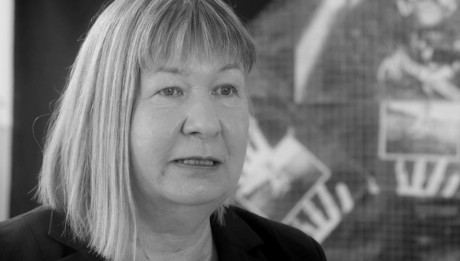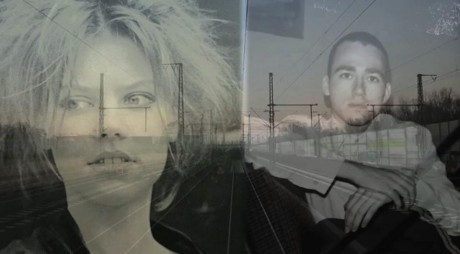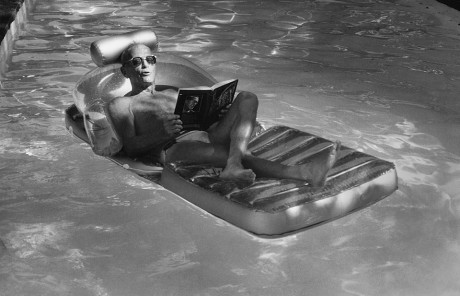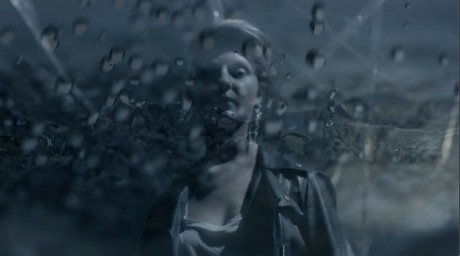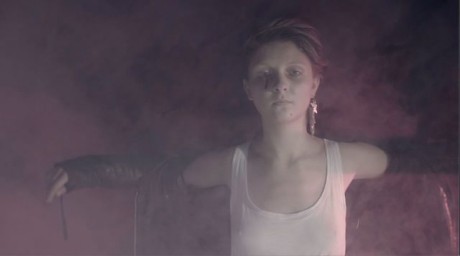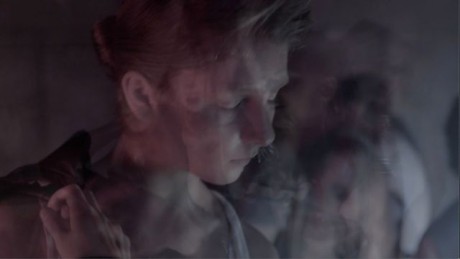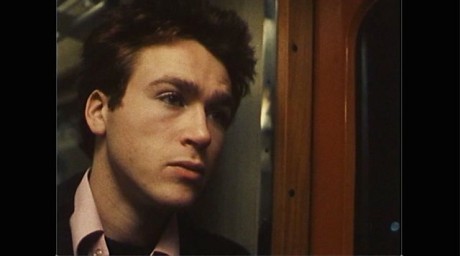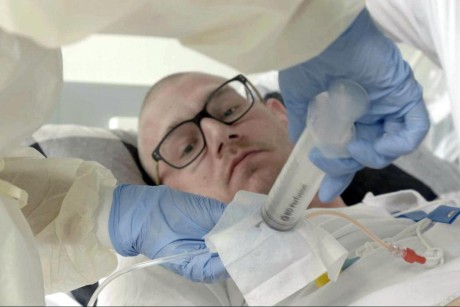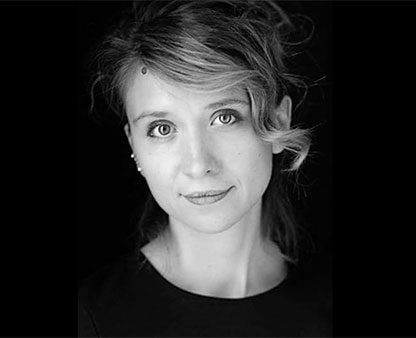
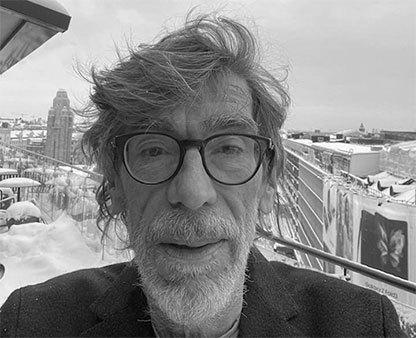
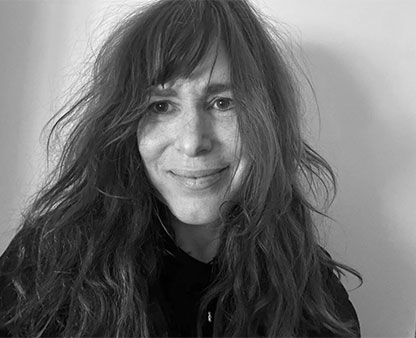
Christian Krönes m. fl.: Ein deutsches Leben
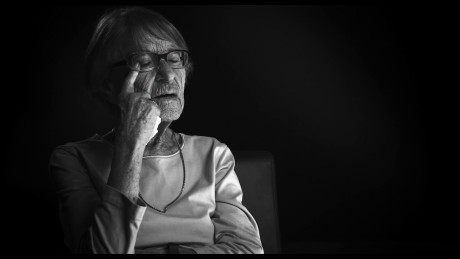
Christian Krönes, Olaf S. Müller, Roland Schrotthofer und Florian Weigensamer: Ein deutsches Leben
SYNOPSIS
Brunhilde Pomsel bezeichnet sich selbst als Randfigur. Dabei kam sie einem der größten Verbrecher der Geschichte so nah wie kaum jemand sonst: Von 1942 bis April 1945 arbeitete sie im Reichspropagandaministerium als persönliche Stenographin von Joseph Goebbels. Noch in den letzten Kriegstagen, nach Goebbels Suizid, tippte sie im Bunker Schriftsätze und wurde unmittelbare Zeugin des “Untergangs”. In EIN DEUTSCHES LEBEN spricht sie erstmals umfassend über ihre persönlichen Erfahrungen im engsten Zirkel um Hitlers größten Hetzer und Massenverführer, über ihre Zweifel, Ängste und ihr Schuldbewusstsein. Der Film ist zugleich ihr letztes Zeugnis: Im Januar 2017 verstarb Brunhilde Pomsel im Alter von 106 Jahren.
Die im konzentrierten Schwarz-Weiß gehaltenen Interview-Passagen werden durch neu erschlossenes Archivmaterial aus dem US Holocaust Memorial Museum und dem Steven Spielberg Film and Video Archive ergänzt. Ausschnitte aus Nachrichten- und “Aufklärungs”- Filmen der verschiedenen kriegsführenden Nationen vermitteln ganz bewusst einseitige und subjektive Informationen und reflektieren so die Wirkung von Propaganda auf einer zeitdokumentarischen Ebene.
Die Erinnerungen Pomsels sind in Zeiten, in denen Populisten in aller Welt immer mehr Zuspruch erhalten und rechtes Gedankengut vor allem in Europa wieder um sich greift, von beklemmender Aktualität. Ihre Lebensgeschichte beleuchtet die Banalität des Schreckens, konfrontiert uns mit der brisanten Frage nach der Verantwortung des Einzelnen für das politische Zeitgeschehen und ist eine eindringliche Warnung aus der Vergangenheit an künftige Generationen. (Filmens hjemmeside)
NOTATER
Filmen som hel og uantastelig fortælling knækker for mig, da der blandt arkivmellemstykkerne skydes disse voldsomme optagelser ind, disse forfærdende billeder, citater fra registreringsfilm optaget af dels tyske, dels tror jeg nok mens jeg ser det, allierede troppeafdelinger, først af de udsultede døde i Warszawas ghetto, så fra åbningerne af koncentrationslejrene, så fra begravelserne i de store fællesgrave. Jeg føler det som for tidlig en indvending mod Brunhilde Pomsels omhyggelige vidneudsagn, filmens absolutte midtsamlende lag så udsøgt fotograferet og så fornemt klippet.
Jeg bliver jo sat i kvindens sted og må opgive at se filmen som essay og hendes omhyggelige overvejelse af hvordan det gik til at hun kunne fortrænge al viden som var ubærlig. Jeg må forlade den redegørelse og begynde et opgør med mig selv om det faktum, at jeg stadig nu som 78-årig, nu i 2018 undgår visse beretninger om ufattelig grusomhed, dengang i Tyskland og Polen, i dag i Syrien og Irak. Jeg springer artiklerne over, læser ikke bøgerne, ser ikke fotografierne, måske heller ikke filmene – kun disse værker der, som jeg ser det og måske selv forsøger, skyder det kunstneriske erkendelsessystem ind foran rædslen.
2
Jeg burde gennemføre en læsning og en skrivning og en tænkning som de store forfattere. Som Hannah Arendt, som W. G. Sebald – på mit niveau forstås! I det mindste læse deres bøger igen og se hvordan det er de gør. Bruger tænkningen. Jeg burde se Joshua Oppenheimers to film igen – og se godt efter – hvad er det han gør? Indbygger distancen ved humor og accentuering, ved overdocering, ved overdrivelse, tror jeg det er. Gør de under fuld kontrol.
3
Men filmen Ein deutsches Leben står enkel og rå for mig. Og det er godt. Den bringer Brunhilde Pomsels sindrige og i sig selv uangribelige fortælling, denne omhyggelige analyse af det at undvige ubekvem viden og alene konkludere: ”Ich könnte keinen Widerstand leisten, ich bin zu feige.”
4
Filmen har en storladen, enkel æstetik. Den skyder dokumentariske arkivstykker ind som ekskurser, som fordybelser, som kollektive erindingsglimt til Brunhilde Pomsels dybt personlige og til fuldstændig ærlig autenticitet litterært finpudset formulerede vidneudsagn. I begyndelsen er det hændelser, vi alle kender, Goebbels taler, også den endelige i Berliner Sportspalast, hvor jeg ved filmens overraskende disposition så indtryksfuldt alene får filmoptagelsernes lydside til sort lærred, hans stemme, som Brunhilde Pomsel opholder sig ved og undrer sig over i sin så besynderligt helt troværdige beskrivelse af denne mand, som alene i sin skuespilkunst viser eller røber sin kyniske modbydelighed i disse så forfærdende sært forførende taler.
Jeg hører alene stemmen og sætningerne, ser ikke billederne. Sådan fornyr dette filmværk disse længst forbrugte historiske optagelser med ny koncentration. Jeg der var immun efter at have set dem for længst og siden alt for mange gange, hører dem nu for første gang, jeg kan ikke lægge dem væk. I denne æstetiserede version er jeg ikke immun, følelsesmæssig. I en nyrenset skønhed tvinger de på ny min opmærksomhed.
5
Jeg tror der er sket det at de fire instruktører er lykkedes med en bearbejdning af de første arkivcitater, men så har givet op – dette kan vi ikke æsteticere, det må vi bare sætte ind, det må vi bringe, det er ukendt materiale, det er enestående… og filmen, deres film, Ein deutsches Leben bliver de steder tavs. Uden bearbejdningen, uden den nye tænkning, uden den poetiske indsats, er det en tavs film, hvor alene Brunhilde Pomsels testamente lever i sin egen litterære højde. På dette sted altså knækker filmen, tror jeg – fejler som filmkunst og bliver anklage. Jura, international retsfølelse, moralfilosofi? Nej, blot tavs anklage, vender sig mod mig: du har en erkendelsesopgave. Du må selv gøre vores film færdig.
6
Brunhilde Promsel selv er derimod færdig med sit arbejde og kan sammenfatte: Jeg var fej. Jeg gjorde for sent noget for at hjælpe Eva Löwenthal – min bedste veninde. Efter mine fem år i russisk fangenskab kunne jeg blot opsøge arkivet i Berlin og spørge efter Eva. Hun var død i 1945, myrdet i en tysk lejr.
De fire filminstruktørers kunstneriske indsats er, oplever jeg, at de så værdifuldt har filmet og ordnet Brunhilde Promsels erindrings- og afklaringsarbejde – men efter at have gjort det så smukt loyalt, lever de kun delvist og usikkert op til hendes fortælleniveau og intellektuelle klarhed, som alligevel gør deres (alle fem) fælles film enestående, uomgængelig, aldeles vigtig og smuk.
Østrig 2016, 113 min. Blackbox Film & Medienproduktion GmbH Dansk distribution: Camera Film, dansk biografpremiere 25. januar. FILMKOMMENTARENS vurdering: 4/6.
http://www.eindeutschesleben.de/ (filmens hjemmeside)
http://www.sueddeutsche.de/muenchen/fimfest-muenchen (anmeldelse)
http://www.eindeutschesleben.de/interview.html (interview om produktionen)
SYNOPSIS
Selv om Brunhilde Pomsel altid beskrev sig selv som en bifigur, der slet ikke var interesseret i politik, kom hun tættere end nogen anden person på en af de største krigsforbrydere, som verden nogensinde har oplevet. Pomsel, der døde sidste år, var sekretær og stenograf for den nazistiske propagandaminister Joseph Goebbels. Hendes liv afspejler nogle af de største historiske rystelser i de 20. århundrede, samt hvordan de påvirkede tilværelsen for almindelige tyskere.
I dag tænker mange, at fascismens farer for længst er blevet overvundet, men Brunhilde Pomsel viser tydeligt, at det på ingen måde er tilfældet. I Et Tysk Liv tvinger hun således tilskuerne til at tage stilling til, hvad de selv ville have gjort, og om de ville have ofret deres moralske principper for at fremme deres egen karriere?
Hendes unikke personlige rejse tilbage til fortiden leder frem til nogle foruroligende, tidløse spørgsmål: Har vi overhovedetudviklet os eller er vi stadig uklare omkring vores egen moral og menneskelighed? Og endnu vigtigere: Hvor står vi selv i forhold til disse spørgsmål i dag? (Pressemeddelelse, Freddy Neumann)
